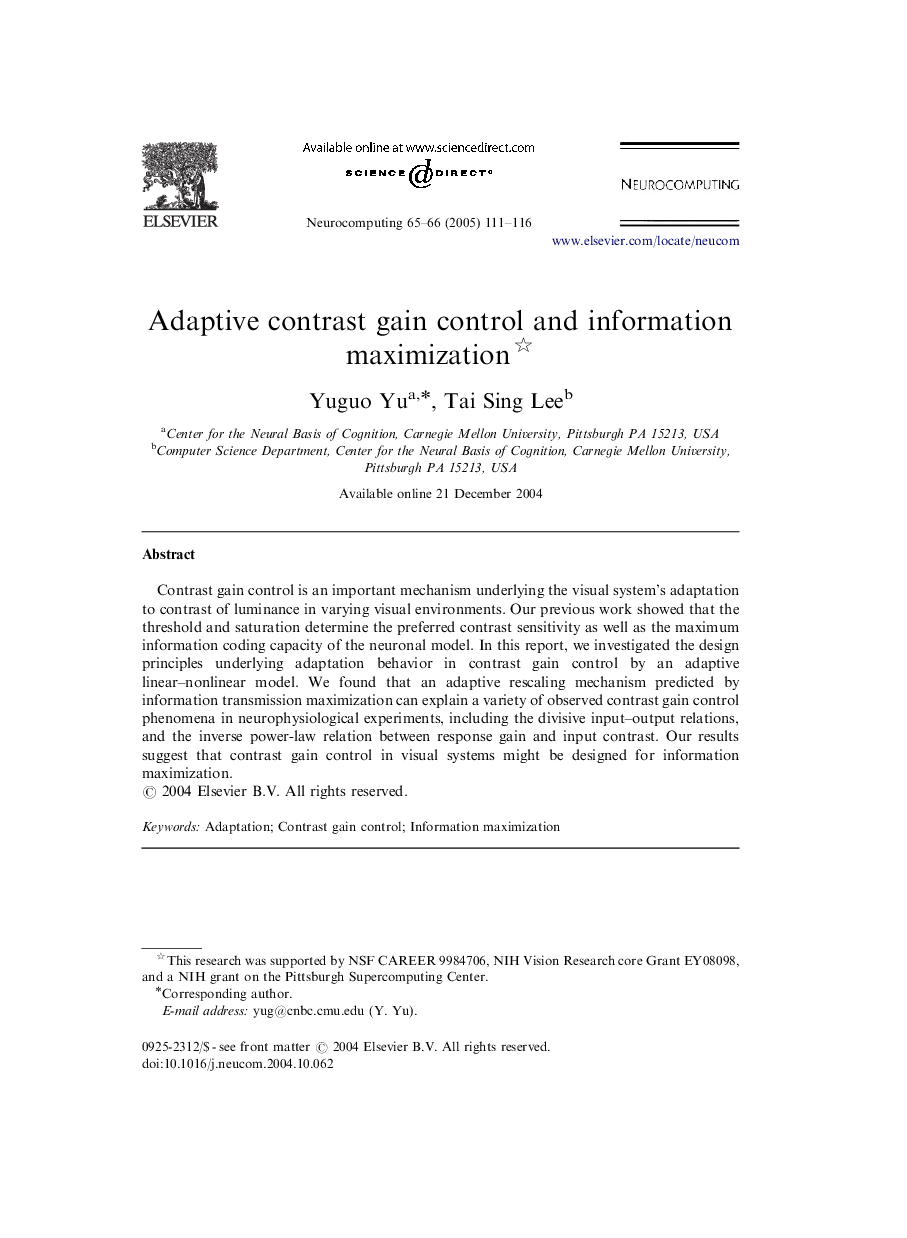| Article ID | Journal | Published Year | Pages | File Type |
|---|---|---|---|---|
| 9653471 | Neurocomputing | 2005 | 6 Pages |
Abstract
Contrast gain control is an important mechanism underlying the visual system's adaptation to contrast of luminance in varying visual environments. Our previous work showed that the threshold and saturation determine the preferred contrast sensitivity as well as the maximum information coding capacity of the neuronal model. In this report, we investigated the design principles underlying adaptation behavior in contrast gain control by an adaptive linear-nonlinear model. We found that an adaptive rescaling mechanism predicted by information transmission maximization can explain a variety of observed contrast gain control phenomena in neurophysiological experiments, including the divisive input-output relations, and the inverse power-law relation between response gain and input contrast. Our results suggest that contrast gain control in visual systems might be designed for information maximization.
Related Topics
Physical Sciences and Engineering
Computer Science
Artificial Intelligence
Authors
Yuguo Yu, Tai Sing Lee,
